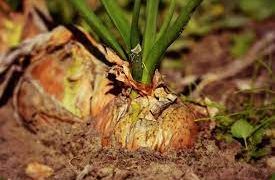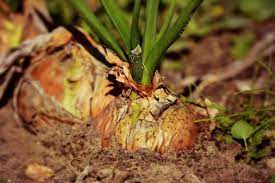Potassium is an essential macronutrient that plays a vital role in onion growth and development. In this article, we will discuss the benefits of potassium fertilization for onion crops, how to determine potassium deficiency, and the best practices for potassium fertilization to enhance onion yield.
Potassium is crucial for onion plant health and productivity, affecting numerous plant processes such as water regulation, disease resistance, and root development. A deficiency in potassium can cause stunted growth, reduced bulb size, and increased susceptibility to pests and diseases. To ensure optimal onion yield and quality, farmers and growers should implement appropriate potassium fertilization practices.
According to research by the University of Georgia, onion plants have a high demand for potassium, especially during the bulbing stage. The study showed that potassium application rates of 60 to 100 pounds per acre resulted in increased onion bulb size and yield. Additionally, it is recommended to apply potassium fertilizers in split applications throughout the growing season, with the first application at planting and subsequent applications during early and late bulbing stages.
It is essential to note that excessive potassium application can also negatively affect onion crops, causing reduced storage quality and bulb decay. To avoid over-application, farmers and growers should perform soil tests to determine the existing soil potassium levels and adjust fertilizer application rates accordingly.
In conclusion, potassium is a vital nutrient for onion growth and development. By applying appropriate potassium fertilization practices, farmers and growers can enhance onion yield and quality, leading to increased profits and productivity.
#OnionFarming #PotassiumFertilization #OnionYield #Agriculture #SoilHealth

































